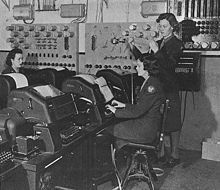Pre-War Life for Women in the Military
Women In the revolutionary and Civil Wars
In the Revolutionary War and Civil War, women served not only as cooks, laundresses, and nurses but also as spies. Some women, like Deborah Sampson of Massachusetts, also disguised themselves as men and fought in battles. (1)
Women in world war i
34,000 U.S. women served in different capacities in World War I with four hundred of these women dying while serving their country. Women serving caused turmoil as the suffragette movement moved to get women the ability to vote though they had sacrificed their lives for the country. Many men disputed the movement for women to gain the right to vote as women were not placed in combat positions. (2)
Civil War Woman as Soldier
Photograph #3 on Source page
Life For Women in World War II
Women in World War II
World War II resulted in an unprecedented utilization of volunteer women in uniform. More than 400,000 women served; 85 became prisoners of war, and more than 500 women lost their lives, 16 of whom were killed in action. Even though many women served in the war in different capacities, with some even giving their lives, the United States still struggled with the limits of women's military functions.(3)
Why were women utilized more in world war ii than in past conflicts?
"World War II was a total war, which required full utilization of womanpower"
4
1.
The need for all men being at the front and fighting. Because of this, women were needed doing paperwork and taking over managerial and administrative posts as well as some even being placed on the front lines as both nurses and soldiers. (5)
2.
4.
The government established the War Manpower Commission in 1942 to alert women to the nation's need for them to work outside the home. The commission advertised in newspapers, on radio, and in films, urging women to go to work and urging businesses to stay open at night to accommodate working women. (12)
The industrial revolution decreased the physical requirements of combat, and the exclusion of women was thus less necessary after the industrial revolution. Women were able to participate in the military now through occupational specialization. (6)
3.


Posters Encouraging Women to help the War Effort
Photographs #4 and #5 on Source page
"Almost overnight women were reclassified by industrials from a marginal to a basic labor supply for munitions making,"
- Mary Anderson, director of the Women's Bureau of the U.S. Department of Labor.
7
Non-Nursing Roles of Women in the Military During World War II
Over the course of the war, women's roles were extended and evolved through programs created by different branches of the military, aiding in putting women in noncombat roles. This marks the time period in which the military began to realize the untapped potential possessed by patriotic young women. (8)
WAAC
"In May 1942, the Women's Army Auxiliary Corps (WAAC) was created with an ambiguous status, half in and half out of the Army... In June 1943 the WAAC became the Women's Army Corps (WAC) and gained full military status." (9)
WAVES
"In July 1942, the Navy bypassed the auxiliary stage and created the Women Accepted for Voluntary Emergency Service (WAVES), granting the same status as reservist men." (10)
WASPS
"The most supportive unit was the Army Air Force, which created the WASP program. It used women in the largest numbers and in the greatest variety of jobs. Women were concentrated in the Chemical Corps and Signal Corps, but were not used as extensively elsewhere."(11)
Various Images of Women In the War
Photographs #6,7,8,9,10,11,12,13,14
Sexism During World War II
At the time of World War II, women had recently gained the right to vote, but were still Disrespected and were Expected to remain subservient to a man.
Sexist Posters and Propaganda
Photographs #15 and #16 on Source page
The Antiquated Views Many Men believed in
"Man is, or should be, woman's protector and defender. The natural and proper timidity and delicacy which belongs to the female sex evidently unfits it for many of the occupations of civil life... The paramount destiny and mission of woman are to fulfill the noble and benign offices of wife and mother. This is the law of the Creator." (15)
- U.S. Supreme Court Justice Joseph Bradley
Bradwell v. State of Illinois (1873)
"Men take life and women give life. Men protect and women are protected. Men are strong and courageous and women are weak and emotional. Men are responsible to the state and women to their family. Men are motivated to function in the horror of war by the thought of returning to the normalcy of home as symbolized by mother, wife, sweetheart, and the nurses who care for them in battle... The increasing integration of women in the military has confused and contradicted these gender norms and roles." (16)
"Female Marines in the 1940s were strongly encouraged to wear lipstick, but it had to match the red cord on their winter caps."(17)
Women's roles in the military evolved and changed but the media perception was much different than the reality at the beginning of the war. Women were pictured doing men's work whereas at the beginning of the war, women were mostly confined to desk-jobs due to the belief that they could not thrive in more active roles. (13)
Public opinion turned negative in 1943, led by soldiers who feared large numbers of servicewomen would take over the safe jobs and ship them off to combat. They circulated false rumors to the effect that many women were lesbians, sexually loose, or otherwise unwholesome. In reality, the women were much less sexually active than the men. Recruiting plunged and in the end, only 350,000 women served. (14)











